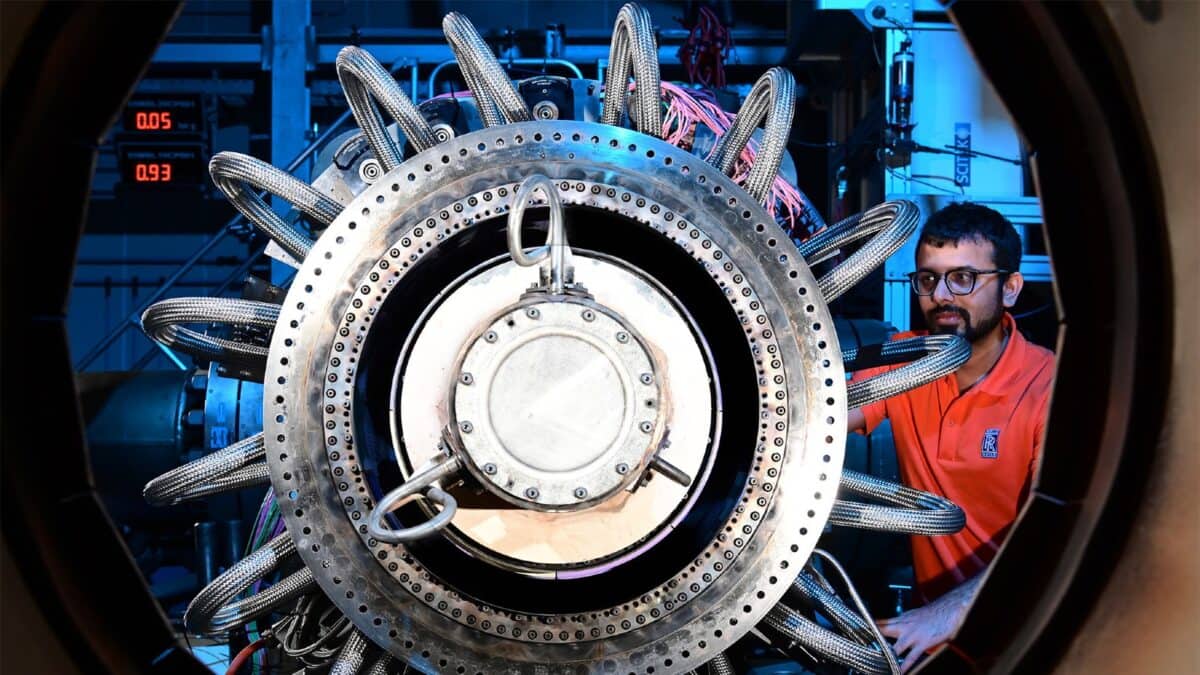With a gain of 221%, the Rolls-Royce (LSE:RR.) share price had a remarkable 2023.
It has bounced back strongly after the company was nearly wiped out by the pandemic.
With revenue earned from both the sale of new aircraft engines, and the number of hours each is flown, its exposure to the aviation sector — which suffered more than most from Covid — put a huge strain on the business.
This reached crisis point in October 2020, when the company had to raise £5bn to shore up its finances.
Changing fortunes
But the performance of its share price during 2023 reflects the fact that Rolls-Royce is on the road to recovery.
During the first half of the year, large engine flying hours were 83% of their pre-pandemic level. And its defence division is benefitting from conflicts throughout the world.
Twice during the year, the directors upgraded their earnings forecasts. On both occasions the share price jumped over 20% as a result.
The company’s now expected to report an underlying operating profit of £1.2bn-£1.4bn in 2023.
This is a significant improvement over its performance in 2022 (£652m), 2021 (£414m), and 2020 (loss £2bn).
But despite the optimism surrounding the company, I believe there are a couple of reasons to be cautious.
Warning signs
Firstly, its stock appears expensive to me.
With a price-to-earnings (P/E) ratio of around 27 — twice the FTSE 100 average — it seems that the share price rally has run ahead of the underlying financial performance of the business.
The directors have set a target of £2.5bn-£2.8bn of operating profit by 2027.
Some of this improvement appears to have already been factored in to its current stock market valuation of £25bn.
The company says the path to increased earnings will be “progressive” but “not necessarily linear“.
This suggests profits might be ‘lumpy’ over the next few years.
It’s worth noting that, at 30 June 2023, the company was technically insolvent with its liabilities exceeding its assets. This also makes me think investors are being too optimistic.
Secondly, the company doesn’t pay a dividend.
This is partly due to a desire to retain cash within the business. But also because of conditions attached to some of its loan facilities.
High P/E ratios, and the absence of a dividend, are usually associated with rapidly growing technology companies, not engineering firms like Rolls-Royce whose origins can be traced back over 100 years.
Final thoughts
I’ve no doubts that Rolls-Royce is a quality company with a reputation for engineering excellence. And I believe that its strategy of selling non-core assets, and focussing on its strengths, is the right one.
I’m also a fan of its development programme for small modular reactors. These are mini nuclear power stations that will be built in a factory prior to being assembled on site.
Although revenue is not expected to be generated until 2030, I see this as an excellent opportunity to diversify away from its aviation business which, as we have seen, can be vulnerable to an economic shock.
But I think its shares are expensive, with other stocks offering better value at the moment. And I’d rather buy one that’s currently paying a dividend.
I therefore don’t intend investing at the moment. Mind you, a significant pull-back in its stock price would make me look again.







